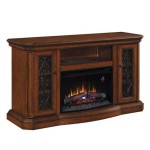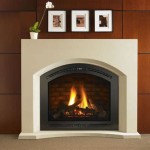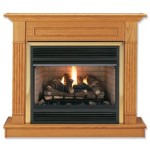Indoor Wood Fireplaces: A Comprehensive Guide
Indoor wood fireplaces have been a staple in homes for centuries, providing warmth, ambiance, and a focal point for living spaces. While modern heating systems have become increasingly prevalent, the allure of a traditional wood-burning fireplace remains strong for many homeowners. Understanding the various aspects of indoor wood fireplaces, from their types and installation to maintenance and safety, is crucial for making informed decisions and maximizing their benefits.
This article explores the different types of indoor wood fireplaces, dissects the intricacies of installation and venting, highlights crucial maintenance practices for optimal performance, emphasizes essential safety considerations, and touches upon the environmental impact associated with wood-burning. The aim is to provide a comprehensive overview, enabling homeowners to appreciate the practical and aesthetic advantages while mitigating potential drawbacks.
Types of Indoor Wood Fireplaces
The market offers a diverse range of indoor wood fireplaces, each distinguished by its design, installation requirements, and performance characteristics. Understanding these various types is the first step in selecting the most suitable option for a particular home.
Traditional Masonry Fireplaces: These are the classic fireplaces built on-site by masons using bricks, stones, or concrete blocks. They are characterized by their substantial size, permanent installation, and traditional aesthetic. Masonry fireplaces typically require a significant amount of space and are often incorporated into the original construction of a home. Their heat efficiency can vary depending on the design and construction quality. Due to their construction, they often require professional cleaning and repairs.
Factory-Built Fireplaces (Zero-Clearance Fireplaces): These prefabricated units are constructed in a factory and designed for easy installation. They are typically lighter and less expensive than masonry fireplaces. Zero-clearance fireplaces are engineered to be installed safely near combustible materials, making them suitable for a wider range of installations. They are often enclosed in a metal firebox and surrounded by a decorative facade.
Wood-Burning Inserts: These units are designed to be inserted into an existing masonry fireplace. They offer improved heating efficiency compared to traditional open fireplaces by providing a controlled combustion environment. Wood-burning inserts often feature glass doors and blowers to circulate heat into the room. They are a practical option for homeowners seeking to upgrade the performance of an existing fireplace.
Freestanding Wood Stoves: While not technically fireplaces, wood stoves are often used as an alternative heating source and share many of the same characteristics. They are self-contained units that can be placed virtually anywhere with proper venting. Wood stoves are known for their high heating efficiency and ability to heat large areas. They are available in a variety of styles and designs to complement different home decors.
Installation and Venting Considerations
Proper installation and venting are critical for the safe and efficient operation of any indoor wood fireplace. Incorrect installation can lead to dangerous situations such as chimney fires, carbon monoxide poisoning, and poor heating performance. Therefore, it is highly recommended to hire a qualified professional for installation.
Chimney Requirements: A properly sized and constructed chimney is essential for venting smoke and combustion gases safely outside the home. The chimney must be tall enough to create adequate draft and prevent downdrafts. Regular inspections and cleaning are crucial to prevent creosote buildup, which can ignite and cause a chimney fire.
Clearance to Combustibles: Maintaining adequate clearance between the fireplace and combustible materials, such as wood framing and drywall, is vital for preventing fires. Zero-clearance fireplaces are specifically designed to minimize these clearance requirements. Local building codes outline the specific clearance requirements for different types of fireplaces.
Venting Systems: Factory-built fireplaces and wood stoves typically require specialized venting systems designed for their specific models. These venting systems are often made of double-wall or triple-wall metal to provide insulation and prevent heat transfer to surrounding materials. It is critical to use the correct venting system as specified by the manufacturer.
Air Supply: Adequate air supply is necessary for proper combustion. Some fireplaces and wood stoves require an external air intake to ensure sufficient oxygen for burning. This is particularly important in tightly sealed homes where the indoor air supply may be limited.
Maintenance and Cleaning Practices
Regular maintenance and cleaning are essential for ensuring the longevity, safety, and optimal performance of an indoor wood fireplace. Neglecting maintenance can lead to reduced heating efficiency, increased risk of fire, and costly repairs.
Chimney Sweeping: Chimney sweeping involves removing creosote and other debris from the chimney flue. The frequency of chimney sweeping depends on the frequency of use and the type of wood burned. It is generally recommended to have the chimney swept at least once a year, or more frequently if the fireplace is used extensively.
Firebox Inspection: Regularly inspect the firebox for cracks, damage, or deterioration. Repair any damage promptly to prevent further degradation and ensure structural integrity. The firebox should be cleaned periodically to remove ash and debris.
Damper Maintenance: The damper controls the airflow through the chimney. Ensure that the damper is functioning properly and seals tightly when closed to prevent heat loss. Lubricate the damper mechanism as needed to ensure smooth operation.
Ash Removal: Remove ash from the firebox regularly to maintain efficient combustion and prevent ash buildup. Use a metal container with a tight-fitting lid to dispose of the ash properly. Avoid using a vacuum cleaner to remove ash, as it can clog the filter and potentially spread fine particles into the air.
Glass Door Cleaning: If the fireplace has glass doors, clean them regularly to remove soot and creosote buildup. Use a specialized glass cleaner designed for fireplace doors to avoid damaging the glass. A mixture of baking soda and water can also effectively remove stubborn stains.
Safety Considerations for Wood Fireplaces
Safety is paramount when operating an indoor wood fireplace. Fireplaces can pose significant fire and health hazards if not used and maintained properly. Adhering to safety guidelines is critical for protecting your home and family.
Carbon Monoxide Detectors: Install carbon monoxide detectors on every level of the home, especially near sleeping areas. Carbon monoxide is a colorless, odorless gas that can be produced by incomplete combustion. Regular testing of the detectors is essential.
Smoke Detectors: Ensure that smoke detectors are installed and functioning properly throughout the home. Test the detectors regularly and replace batteries as needed.
Fire Extinguisher: Keep a readily accessible fire extinguisher near the fireplace. Ensure that all household members know how to use the fire extinguisher in case of an emergency.
Safe Burning Practices: Burn only seasoned firewood. Green or unseasoned wood produces more smoke and creosote, increasing the risk of chimney fires. Never burn trash, paper, or other materials in the fireplace, as they can release harmful chemicals and create excessive smoke.
Spark Arrestor: Check the spark arrestor at the top of the chimney. This screen helps prevent embers from escaping the chimney and potentially igniting nearby vegetation or structures. It needs to be clean and free of debris.
Child and Pet Safety: Supervise children and pets closely when the fireplace is in use. Install a fireplace screen or barrier to prevent them from touching the hot surfaces. Educate children about the dangers of playing near the fireplace.
Proper Fuel Storage: Store firewood away from the house to prevent the spread of insects or rodents. Keep a small supply of firewood near the fireplace for convenience, but avoid storing excessive amounts indoors, as this can increase the risk of fire.
Environmental Impact
Wood-burning fireplaces can have a significant environmental impact, primarily due to the emissions of particulate matter and greenhouse gases. Understanding these impacts is crucial for making informed decisions about fireplace usage and mitigating potential environmental consequences.
Particulate Matter Emissions: Wood smoke contains fine particulate matter (PM2.5), which can be harmful to human health, particularly for individuals with respiratory problems. PM2.5 can penetrate deep into the lungs and contribute to respiratory illnesses, cardiovascular disease, and other health problems. The amount of particulate matter emitted depends on the type of wood burned, the combustion efficiency of the fireplace, and the presence of emission control devices.
Greenhouse Gas Emissions: Burning wood releases carbon dioxide (CO2), a major greenhouse gas that contributes to climate change. While wood is considered a renewable resource, the CO2 emitted during combustion contributes to the overall greenhouse gas concentration in the atmosphere. However, the net impact of wood burning on climate change depends on the sustainability of forest management practices. If trees are replanted to replace those harvested for firewood, the CO2 absorbed by the new trees can offset the CO2 emitted during combustion.
Mitigation Strategies: Several strategies can be employed to mitigate the environmental impact of wood-burning fireplaces. These include using EPA-certified wood stoves or fireplace inserts, burning only seasoned firewood, practicing proper combustion techniques, and supporting sustainable forest management practices. EPA-certified stoves and inserts are designed to burn wood more efficiently and produce fewer emissions. Burning seasoned firewood reduces smoke and creosote buildup. Proper combustion techniques, such as ensuring adequate air supply, can also minimize emissions.

Indoor Wood Fireplaces Jetmaster
3 Things We Love About Wood Fireplaces

A Guide To Choosing The Best Indoor Fireplace Increase Comfort

A Guide To Choosing The Best Indoor Fireplace Increase Comfort

Wood Burning Fireplace Toronto Presenting 20 Global Brands

Focus Fireplaces Gyrofocus Glazed Wood Burning Stove Bonfire

How To Use A Fireplace Bob Vila

Indoor Living And Fireplace Design Ideas Outdoor Advice Greatrooms

High Efficiency Performance Wood Fireplaces Valcourt

Indoor Wood Fireplaces Jetmaster








